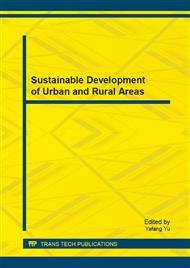p.486
p.492
p.497
p.501
p.505
p.511
p.515
p.521
p.527
Analyses of the Suitability of Ground-Source Systems in Typical Architecture in Northern Region
Abstract:
The aim of study was to measure the suitability and energy saving of soil source heat pump. We established a tube group model of underground temperature field in 20 years. Take three typical architecture--tavern, office and hotel buildings for example, used the primary energy ratio--one index about energy-savingas the main target of comparison, then took the technical indicators soil cumulative temperature into account. The result shows that the shopping malls in Beijing is the best grade of the applicability about the soil source heat pumps application, followed by hotel and office building is the worst.
Info:
Periodical:
Pages:
505-510
Citation:
Online since:
January 2014
Authors:
Price:
Сopyright:
© 2014 Trans Tech Publications Ltd. All Rights Reserved
Share:
Citation:


